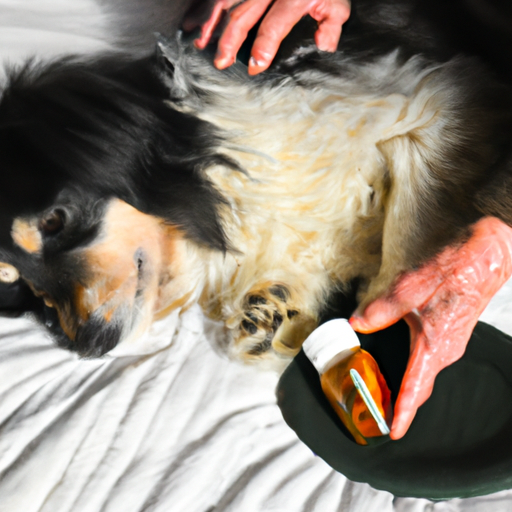Arthritis is a common ailment in dogs, particularly as they age. As a caregiver, dealing with a pet suffering from this condition can be heart-wrenching. However, there are numerous ways to help manage your furry friend’s discomfort, and this article will walk you through them.
1. Understanding Canine Arthritis
Arthritis in dogs, like in humans, is inflammation or swelling in the joints that causes discomfort and stiffness. It is usually a result of wear and tear on the joints and is more prevalent in older dogs. However, younger dogs can also develop arthritis.
Understanding the signs of arthritis in your dog is crucial. Symptoms may include:
- Difficulty moving
- Limping or favoring a leg
- Reduced activity or reluctance to do things they once enjoyed
- Stiffness, particularly after rest
- Visible swelling in the joints
2. Treatment Options for Canine Arthritis
When it comes to arthritis treatment, there is no one-size-fits-all. The best course of action is often a combination of the following:
2.1. Veterinary Medications
Your vet may prescribe Non-Steroidal Anti-Inflammatory Drugs (NSAIDs) to help manage pain and inflammation. Other medications such as corticosteroids, disease-modifying osteoarthritis drugs (DMOADs), or supplements like glucosamine and chondroitin may also be recommended.
| Drug Type | Description |
|---|---|
| NSAIDs | Reduce inflammation and relieve pain |
| Corticosteroids | Reduce inflammation but have more side effects |
| DMOADs | Help to modify the course of the disease |
| Supplements | Support joint health |
2.2. Physical Therapy
Physiotherapy can help improve your dog’s mobility and strength, reduce pain, and increase joint function.
2.3. Weight Management
Excess weight puts additional strain on your dog’s joints. If your dog is overweight, discuss a weight loss plan with your vet.
2.4. Assistive Devices
Items like ramps, orthopedic beds, and harnesses can make your dog’s life easier and more comfortable.
3. Home Remedies for Canine Arthritis
In addition to the treatments recommended by your vet, there are several things you can do at home to help your dog stay comfortable:
- Regular, gentle exercise: This can help keep your dog’s joints flexible. However, avoid high-impact activities that could put more strain on their joints.
- Warm, comfy bed: Providing a warm place for your dog to rest can help ease joint stiffness.
- Massage: Gentle massage can help increase your dog’s flexibility, circulation, and sense of well-being.
4. Preventive Measures
While it’s impossible to completely prevent arthritis, there are several steps you can take to reduce your dog’s risk:
- Keep your dog at a healthy weight to avoid excessive strain on their joints.
- Regular exercise to keep their joints healthy and flexible.
- Provide a balanced diet rich in omega-3 fatty acids, which have anti-inflammatory properties.
- Regular vet check-ups to catch early signs of arthritis.
5. Frequently Asked Questions (FAQs)
5.1. Can arthritis in dogs be cured?
No, arthritis is a degenerative disease and cannot be cured, but its symptoms can be managed effectively.
5.2. What is the best diet for a dog with arthritis?
A diet rich in omega-3 fatty acids, lean proteins, and antioxidants is beneficial for dogs with arthritis.
5.3. Can I give my dog human arthritis medication?
No, never give your dog medication without consulting a vet first. Some human medications can be harmful or even fatal to dogs.
5.4. Can exercise help my dog’s arthritis?
Yes, regular, gentle exercise can help keep your dog’s joints flexible and strong, but avoid high-impact activities.
5.5. How can I make my home more comfortable for my arthritic dog?
Provide a warm, soft bed and use rugs or mats for slippery floors. You can also use ramps to help your dog navigate stairs.
Caring for a dog with arthritis can be challenging, but with good management and lots of love, your furry friend can live a comfortable, happy life. Always consult your vet for the best course of action for your individual dog’s needs.



